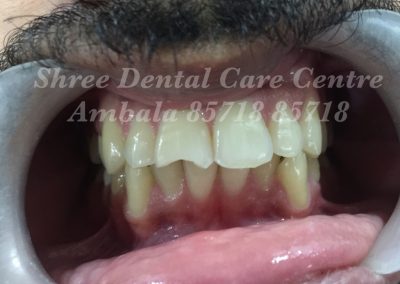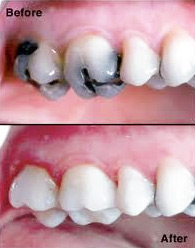RESTORATIONS
Amalgam Fillings
Amalgam is the most commonly used dental material for treating tooth decay. Amalgam contains a mixture of metal alloys including silver, tin, copper, zinc and mercury. Amalgam has been used in dentistry for over 150 years. Yet, there has been ongoing concern about the health risks associated with amalgam fillings.
There are certain advantages to amalgam that make it an excellent material for filling cavities. For example, amalgam has a long life and is very predictable. It is far less expensive than alternative materials such as composite resin, gold alloy or porcelain. Amalgam is also a relatively easy material to work with. When compared to alternative filling materials, amalgam costs less, takes less time to prepare and place, and the patient’s cost for amalgam fillings is largely covered by most dental insurance companies.


Is Amalgam Safe?
Alternative Filling Materials

